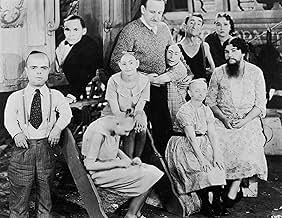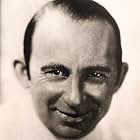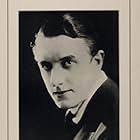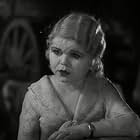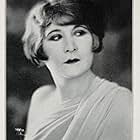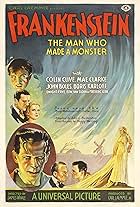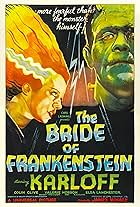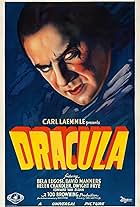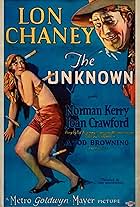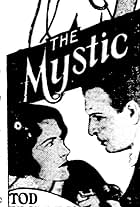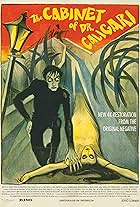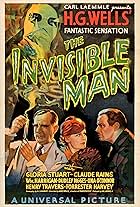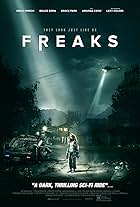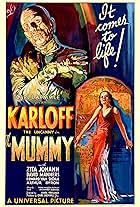A circus' beautiful trapeze artist Cleopatra agrees to marry Hans the leader of side-show performers, but Hans' deformed friends discover that she is only marrying him for his inheritance. S... Read allA circus' beautiful trapeze artist Cleopatra agrees to marry Hans the leader of side-show performers, but Hans' deformed friends discover that she is only marrying him for his inheritance. So they seek revenge.A circus' beautiful trapeze artist Cleopatra agrees to marry Hans the leader of side-show performers, but Hans' deformed friends discover that she is only marrying him for his inheritance. So they seek revenge.
- Awards
- 2 wins & 1 nomination
Roscoe Ates
- Roscoe
- (as Rosco Ates)
Prince Randian
- The Living Torso
- (as Rardion)
Storyline
Did you know
- TriviaThe on-screen romance between Hans and Frieda was very subdued because the roles were being played by real life brother and sister Harry Earles and Daisy Earles.
- GoofsAt 43:40 when Cleo tosses the wine at Angeleno, she is standing in front of him, but the wine she throws comes from the far right side of the frame.
- Quotes
Freaks: We accept you, one of us! Gooble Gobble!
- Alternate versionsReissue prints included a two-and-a-half minute written prologue about historical interpretations and contemporary studies of "misshapen misfits." These same prints remove the MGM Lion (the studio having disowned the film for many years).
- ConnectionsEdited into Histoire(s) du cinéma: Le contrôle de l'univers (1999)
Featured review
Part fictional portrait of a group of circus sideshow performers and part tragic soap opera about their various and complicated relationships, the main story has a midget, Hans (Harry Earles), falling in love with the Amazonian trapeze artist, Cleopatra (Olga Baclanova), who feigns affection for him--at first to taunt him and later to use him.
Freaks isn't really a horror film, although the horror boom that began in 1931 precipitated Freaks entering production. The script developed out of an earlier one named "Spurs" that had been in MGM's possession since the late 1920s. The success of Universal's horror films of 1931 (Dracula and Frankenstein) had studios scrambling to cash in on the trend. Horror films weren't new, of course, but repeated commercial success of horror films released in quick succession was. A number of factors contributed to the phenomenon, including the Great Depression, the lingering cultural impact from World War I, and the advent of sound films. So even though Freaks wasn't exactly horror, and the protagonists weren't exactly monsters, it was close enough. In the early 1930s, the public had not yet been overexposed to media-sensationalized differences in human appearances and behavior. The effect of the film then, in conjunction with memories of real life horrors, including those of war-mangled veterans, offered the emotional reaction that producers and studios are often seeking from horror films.
But Freaks is really part tragic drama, part character study, and in many ways it is almost a documentary. The modern attraction to the film comes from a few sources. One, the "gawking effect", or the simple fact of watching the freaks in action. Sideshows are an unfortunately dying phenomenon, if they're not already dead (many would say they are), largely because of a combination of medical advances, which often "cure" the physical differences that would have made "victims" sideshow candidates, and political correctness, which mistakenly sees sideshows as negatively exploitative. It's fascinating watching the different kinds of people in the film and their behavior, including not only their social interactions, but how some of them manage to just get around and perform everyday activities such as eating, lighting a cigarette, and so on. This kind of material takes up at least half of the film's short running time (64 minutes; initially it ran closer to 90 minutes, but 26 minutes of cuts were made (and are now apparently lost) to appease the New York State censor board).
Two, this was a lost film, figuratively and almost literally, for quite some time. MGM wanted nothing to do with it. For a while, it had been playing the "roadshow" circuit in different cuts, under different titles, such as "Nature's Mistakes". The film had been banned in many areas, and at least technically is still banned in some. It eventually appeared on VHS in the 1980s, but until the recent DVD release, it has never been very easy to find in most rental or retail outlets.
Three, the most common modern reading of the film--and this was also part of director Tod Browning's intention in making Freaks, even if the average audience member didn't see it this way at first, has it as a Nightbreed (1990)-like turning of the dramatic tables, where the extremely alienated "monsters" are the sympathetic protagonists and the ostensibly "normal" humans turn out to be the real monsters. For those who like films best where they can identify in some emotional way with the characters, Freaks is particularly attractive to anyone who feels alienated or strongly different, even looked down upon, by "normal" society. At various times, and by various people, Freaks has been read as everything from purely exploitative schlock to a socialist parable to a film imbued with odd commentary, metaphors and subtexts about male-female couplings and Oedipal complexes.
Freaks isn't a great film in terms of the usual criteria, such as storytelling, exquisite performances, and so on, but it's appropriate that it wouldn't be a masterpiece per the normal criteria--it's not about normal people. The film is certainly valuable as a creative, almost experimental artwork, not to mention as a more or less permanent record of the decayed and almost abandoned artform of sideshows. It's not surprising that not every cast member is an incredible actor--for many roles, there was only one person available who could have fulfilled the character in a particular way, making the stilted delivery of dialogue more excusable. In any event, this is an important film historically, and a joy to watch.
Freaks isn't really a horror film, although the horror boom that began in 1931 precipitated Freaks entering production. The script developed out of an earlier one named "Spurs" that had been in MGM's possession since the late 1920s. The success of Universal's horror films of 1931 (Dracula and Frankenstein) had studios scrambling to cash in on the trend. Horror films weren't new, of course, but repeated commercial success of horror films released in quick succession was. A number of factors contributed to the phenomenon, including the Great Depression, the lingering cultural impact from World War I, and the advent of sound films. So even though Freaks wasn't exactly horror, and the protagonists weren't exactly monsters, it was close enough. In the early 1930s, the public had not yet been overexposed to media-sensationalized differences in human appearances and behavior. The effect of the film then, in conjunction with memories of real life horrors, including those of war-mangled veterans, offered the emotional reaction that producers and studios are often seeking from horror films.
But Freaks is really part tragic drama, part character study, and in many ways it is almost a documentary. The modern attraction to the film comes from a few sources. One, the "gawking effect", or the simple fact of watching the freaks in action. Sideshows are an unfortunately dying phenomenon, if they're not already dead (many would say they are), largely because of a combination of medical advances, which often "cure" the physical differences that would have made "victims" sideshow candidates, and political correctness, which mistakenly sees sideshows as negatively exploitative. It's fascinating watching the different kinds of people in the film and their behavior, including not only their social interactions, but how some of them manage to just get around and perform everyday activities such as eating, lighting a cigarette, and so on. This kind of material takes up at least half of the film's short running time (64 minutes; initially it ran closer to 90 minutes, but 26 minutes of cuts were made (and are now apparently lost) to appease the New York State censor board).
Two, this was a lost film, figuratively and almost literally, for quite some time. MGM wanted nothing to do with it. For a while, it had been playing the "roadshow" circuit in different cuts, under different titles, such as "Nature's Mistakes". The film had been banned in many areas, and at least technically is still banned in some. It eventually appeared on VHS in the 1980s, but until the recent DVD release, it has never been very easy to find in most rental or retail outlets.
Three, the most common modern reading of the film--and this was also part of director Tod Browning's intention in making Freaks, even if the average audience member didn't see it this way at first, has it as a Nightbreed (1990)-like turning of the dramatic tables, where the extremely alienated "monsters" are the sympathetic protagonists and the ostensibly "normal" humans turn out to be the real monsters. For those who like films best where they can identify in some emotional way with the characters, Freaks is particularly attractive to anyone who feels alienated or strongly different, even looked down upon, by "normal" society. At various times, and by various people, Freaks has been read as everything from purely exploitative schlock to a socialist parable to a film imbued with odd commentary, metaphors and subtexts about male-female couplings and Oedipal complexes.
Freaks isn't a great film in terms of the usual criteria, such as storytelling, exquisite performances, and so on, but it's appropriate that it wouldn't be a masterpiece per the normal criteria--it's not about normal people. The film is certainly valuable as a creative, almost experimental artwork, not to mention as a more or less permanent record of the decayed and almost abandoned artform of sideshows. It's not surprising that not every cast member is an incredible actor--for many roles, there was only one person available who could have fulfilled the character in a particular way, making the stilted delivery of dialogue more excusable. In any event, this is an important film historically, and a joy to watch.
- BrandtSponseller
- Mar 4, 2005
- Permalink
Details
- Release date
- Country of origin
- Languages
- Also known as
- Fenómenos
- Filming locations
- Production company
- See more company credits at IMDbPro
Box office
- Budget
- $310,607 (estimated)
- Gross worldwide
- $4,072
- Runtime1 hour 4 minutes
- Color
- Aspect ratio
- 1.37 : 1
Contribute to this page
Suggest an edit or add missing content





